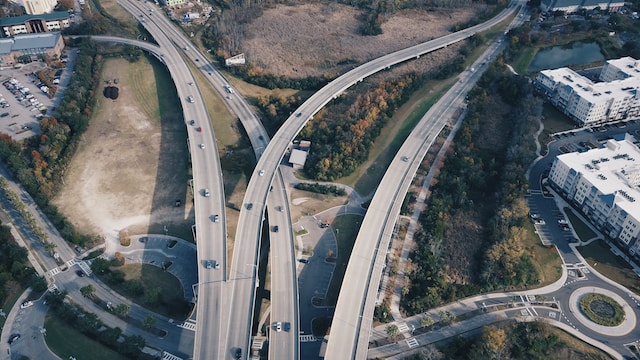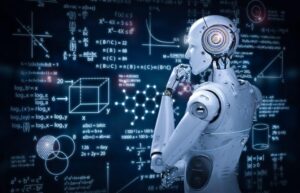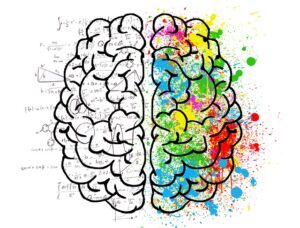How can machine learning algorithms improve infrastructure resilience? They can transform how building managers and architects design and maintain infrastructure. Tools like digital twins, AI analytics, and automated structural monitoring improve visibility and pinpoint solutions to emerging infrastructure challenges.
Optimizing Structures with Digital Twins
“Digital twins can be highly effective tools for optimizing infrastructure design, layout and operations.”
A digital twin replicates a real-world structure or system in a virtual environment, where machine learning and AI modelling tools can analyze and alter it.
They’re a great low-risk solution for testing out different infrastructure designs. The AI uses real-world data to simulate the performance impact of design changes. This allows designers to identify the best optimization strategies without altering real-world operations, requesting costly pilot programs or ordering expensive design changes.
One of the best benefits of digital twins is increased visibility. Infrastructure is more than just the exterior architecture of a building or bridge. Many facets impact structural stability, durability, navigation, utility performance and environmental impact.
Digital twins and machine learning tools can give designers insights into these factors before constructing a building. A digital twin also brings together otherwise disparate silos of information. This increases the probability that all possible errors and inefficiencies are identified during the planning process.
The result is a highly optimized infrastructure designed for resilience and efficiency. Digital twins encourage a whole-building approach to infrastructure design, which reduces the likelihood of unforeseen structural risks. AI modelling and predictive analytics can help designers build infrastructure prepared for long-term wear and tear.
Additionally, digital twins remain useful even after construction is complete. Building managers can use IoT sensors to collect information on infrastructure over months and years. They use this information to keep the digital twin up to date so it can model future structural issues and risks.
An up-to-date digital twin can help building managers understand maintenance issues, create emergency plans, conduct building inspections and more. The digital twin can also model the potential impact of events like severe weather incidents.
Building for Climate Resiliency
Climate change is one of the biggest challenges facing infrastructure design today. As the planet’s temperature rises, weather becomes more volatile and extreme. Research shows flooding is upwards of 300% more common today than 50 years ago. Winters and summers are getting more severe as well.
Changes in weather patterns — especially extreme weather — increase the likelihood of infrastructure damage due to incidents like storms, flooding or wildfires. As a result, new infrastructure must be designed for climate resilience. Machine learning and AI can help accomplish this in a few ways. For example, machine learning is invaluable for tracking, analyzing and predicting weather pattern changes.
“AI weather prediction tools can help architects and designers understand what risks and hazards a structure could face over the next several decades”
Climate change is causing weather patterns to shift more rapidly and dramatically than in previous centuries, so building for today’s weather is no longer adequate.
With machine learning, scientists and architects can combine current environmental data with climate change data to get a detailed prediction of future risks. They can use AI to analyze this data alongside a building’s structural data and pinpoint weather-related hazards. Predictive analytics empowers building managers, architects and engineers to prepare infrastructure for severe weather before it strikes.
One particularly effective way to accomplish this is through AI-powered simulations. Digital twins and modeling programs can create possible scenarios showing how a piece of infrastructure will fare in various weather conditions. Architects can model several solutions to find the most promising methods for strengthening buildings against climate-related risks.
Monitoring Structural Health
The structural integrity of a building can change over time due to numerous factors. Monitoring these changes is essential to ensure infrastructure remains safe and stable. AI and machine learning can aid structural health monitoring and predict potential hazards.
Before construction begins, building materials are thoroughly tested to determine their durability. For example, modal testing is commonly used to analyze material properties like mass, stiffness and damping. Modal testing is excellent for generating a large amount of data on how a building material behaves under different conditions. Architects and engineers can use AI to analyze modal testing data and extract key trends and insights.
“For example, an AI analytics algorithm could identify the maximum vibration a material can withstand before experiencing damage.”
Information like this is vital for ensuring a building is made of materials that can withstand earthquakes and severe weather events. After construction, AI and machine learning can also help building managers and city planners monitor structural integrity. Building managers can use IoT sensors to collect structural data continuously and feed it into AI data analytics algorithms. The AI can autonomously analyze the information for signs of risks or structural fatigue.
This same technology can monitor the inner workings of buildings, as well. HVAC systems, plumbing, wiring and other utility infrastructure can lose efficiency over time without careful maintenance. IoT sensors open the door for predictive maintenance, allowing building managers to prevent utility failures like power outages or waterline breaks.
AI modelling programs can even help to build managers and improve the efficiency of infrastructure utility systems. The layout and configuration of utilities within a building can directly impact efficient resource consumption. AI analytics can identify inefficiencies and model potential solutions, helping architects and designers develop more sustainable, resilient infrastructure.
Utilizing AI for Generative Architecture Design
One cutting-edge use of AI and machine learning is generative architecture. This unique design niche uses AI to model structures based on specified properties. Generative design still requires the expertise of a human architect, but it can spark inspiration for innovative approaches to infrastructure.
For instance, an architect might enter the number of floors, required utilities, real estate limitations and other basic structural details into a generative modelling program. The AI would use this information to generate a design meeting the requirements in the most algorithmically effective way.
Generative design has the potential to create an infrastructure that is resource efficient without compromising structural integrity. This is vital for the future of resilient infrastructure since climate change can impact supply chains and the availability of key building materials, such as concrete. In the years ahead, architects will increasingly need to improve structural durability using the minimum resources possible.
Biomimicry is one particularly unique corner of AI-powered design. While biomimetic architecture doesn’t always use AI, artificial intelligence can aid in the process. Biomimicry involves drawing inspiration from nature to design artificial objects, such as buildings.
It utilizes the centuries of evolution that optimizes the design of the natural world and applies those lessons to architecture. AI-powered generative design can draw off data from biological structures to influence new architectural creations. Scientists can even use machine learning to analyze and understand how natural systems function so they can artificially replicate those systems in architecture.
In fact, generative design is much like a rapid form of evolution. The AI processes numerous potential structures, algorithmically refining them until it finds the most effective solution. The result is more resilient infrastructure, which is often better for the environment due to minimized resource consumption.
Improving Infrastructure Resilience With AI
AI and machine learning are invaluable tools in infrastructure design, development, construction and maintenance. These algorithms can help design teams and building managers better understand structures and prepare for long-term risk factors.
AI can form the foundation of innovative new architectural designs and highlight cutting-edge solutions to challenges like severe weather incidents. With the help of AI and machine learning, the infrastructure of tomorrow can be more durable and resource-efficient.









